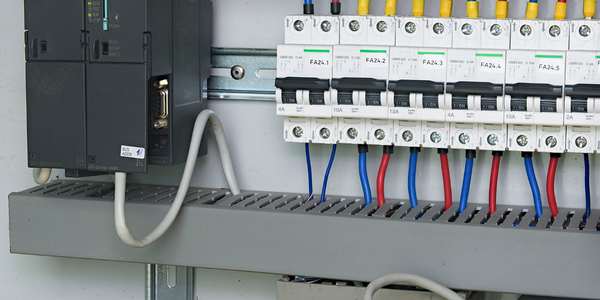DEK Halts Spam with Barracuda Email Security Gateway
Customer Company Size
Large Corporate
Region
- Europe
- America
Country
- Germany
- United Kingdom
Product
- Barracuda Email Security Gateway 400
- Barracuda Email Security Gateway 300
Tech Stack
- Email Security
- Spam Filtering
- Virus Protection
- Data Protection
Implementation Scale
- Enterprise-wide Deployment
Impact Metrics
- Cost Savings
- Customer Satisfaction
- Productivity Improvements
Technology Category
- Cybersecurity & Privacy - Malware Protection
- Cybersecurity & Privacy - Security Compliance
Applicable Industries
- Electronics
- Professional Service
Applicable Functions
- Business Operation
- Quality Assurance
Services
- System Integration
- Cloud Planning, Design & Implementation Services
About The Customer
DEK is a leading provider of equipment and processes for the high accuracy mass imaging of electronic materials. The UK-based company has developed screen printing technologies for leading-edge electronic assemblers since 1969. Through the combined strength of machines, stencils and screens, consumables and process support products, DEK delivers total support for their customers’ materials deposition processes. To ensure that its customers continue to receive this high-quality support and service, it is necessary for DEK employees to have solid, uninterrupted means of communication, companywide as well as with customers.
The Challenge
Before 2005, DEK struggled with keeping email, one of its most important communication channels, flowing due to increasing amounts of unsolicited email hitting employees’ inboxes. The legacy email filtering system DEK relied on was not stopping the spam from bombarding the company’s 800+ globally based email users who were located both in the field and 18 satellite offices. According to Chris Bill, IT security analyst at DEK, an estimated 20% of spam was getting through to its email users. Originally DEK’s MIS department began filtering email to ensure compliance, however, spam had become a primary issue. Previously, the MIS department would check its email filter periodically. However, this became nearly a full-time task, which included the risk that a genuine email, possibly an order from a long-standing customer, could be inadvertently deleted. Bill says, “I cannot begin to think how much time was wasted by employees.” Plagued by complaints from frustrated users who had to wade through massive amounts of spam, as well as those who had lost important emails, Bill was tasked with finding a more capable email security solution that could also provide protection against ever-present threats. Compliance was also paramount to DEK. The MIS department and DEK management were keen to stop inappropriate content from entering the company and they also needed to ensure that employees did not send email that might include inappropriate language or content to customers.
The Solution
After researching and evaluating several solutions, Bill spoke with a Hertfordshire-based IT company that recommended a Barracuda Email Security Gateway and Bill was pleased that Barracuda Networks offers a 30-day free evaluation unit. Bill was also pleased by the Barracuda Email Security Gateway’s per-user settings and quarantine. “One man’s spam is another man’s ham and with the Barracuda Email Security Gateway users can decide for themselves which email is to be whitelisted and which not,” says Bill. “I may be interested in my weekly fishing e-zine, but perhaps no one else is.” DEK was so impressed with the results of the trial and the Email Security Gateway’s affordable price that the company purchased four Barracuda Email Security Gateway models: DEK placed two Barracuda Email Security Gateways at each mail gateway, one at their UK headquarters and another at its office in Germany, in a clustered environment for redundancy. This allowed the units to share one rule base and users only needed to access one site to check their own quarantine areas. DEK purchased two Barracuda Email Security Gateway 300s for outbound email filtering in both the UK and German offices. Internal mail servers direct email to the Barracuda Email Security Gateway in outbound mode via a fake MX zone. This ensures that the most available Barracuda Email Security Gateway receives the email to send out, which reduces the risk of downtime due to connectivity issues.
Operational Impact
Quantitative Benefit

Case Study missing?
Start adding your own!
Register with your work email and create a new case study profile for your business.
Related Case Studies.

Case Study
Remote Temperature Monitoring of Perishable Goods Saves Money
RMONI was facing temperature monitoring challenges in a cold chain business. A cold chain must be established and maintained to ensure goods have been properly refrigerated during every step of the process, making temperature monitoring a critical business function. Manual registration practice can be very costly, labor intensive and prone to mistakes.

Case Study
Predictive maintenance in Schneider Electric
Schneider Electric Le Vaudreuil factory in France is recognized by the World Economic Forum as one of the world’s top nine most advanced “lighthouse” sites, applying Fourth Industrial Revolution technologies at large scale. It was experiencing machine-health and unplanned downtime issues on a critical machine within their manufacturing process. They were looking for a solution that could easily leverage existing machine data feeds, be used by machine operators without requiring complex setup or extensive training, and with a fast return on investment.

Case Study
Cloud Solution for Energy Management Platform-Schneider Electric
Schneider Electric required a cloud solution for its energy management platform to manage high computational operations, which were essential for catering to client requirements. As the business involves storage and analysis of huge amounts of data, the company also needed a convenient and scalable storage solution to facilitate operations efficiently.

Case Study
Leveraging the IoT to Gain a Competitive Edge in International Competition
Many large manufacturers in and outside Japan are competing for larger market share in the same space, expecting a growing demand for projectors in the areas of entertainment, which requires glamor and strong visual performance as well as digital signage that can attract people’s attention. “It is becoming more and more difficult to differentiate ourselves with stand-alone hardware products,” says Kazuyuki Kitagawa, Director of Service & Support at Panasonic AVC Networks. “In order for Panasonic to grow market share and overall business, it is essential for us to develop solutions that deliver significant added value.” Panasonic believes projection failure and quality deterioration should never happen. This is what and has driven them to make their projectors IoT-enabled. More specifically, Panasonic has developed a system that collects data from projectors, visualizes detailed operational statuses, and predicts issues and address them before failure occurs. Their projectors are embedded with a variety of sensors that measure power supply, voltage, video input/ output signals, intake/exhaust air temperatures, cooling fan operations, and light bulb operating time. These sensors have been used to make the projector more intelligent, automatically suspending operation when the temperature rises excessively, and automatically switching light bulbs. Although this was a great first step, Panasonic projectors were still not equipped with any capability to send the data over a network.








